The Power of Geolocation in Digital Signage
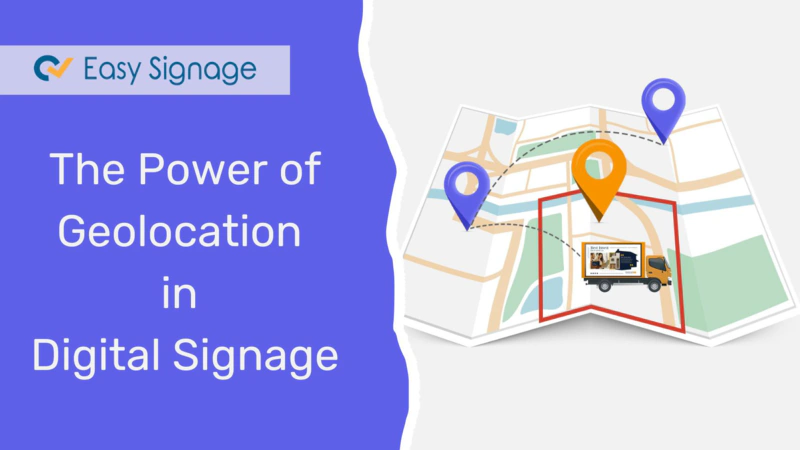
Engaging customers with the right message at the right time has never been more important. Today, personalisation is in everything, from Netflix recommendations to social media ads, we are constantly exposed to customised content.
But have you thought about how digital signage can also be personalised by location?
Geolocation in digital signage is the key to delivering highly targeted and relevant content based on the specific location of the screen.
Traditional methods often fail to deliver personalised messages that truly resonate.
Let’s see how geolocation works, why it’s useful, and how to use it to make your digital signage more effective and engaging.
What is Geolocation in Digital Signage?
Imagine walking down the street when a passing taxi with a digital sign mounted on top of the car suddenly displays an ad for a local restaurant just a block away, offering you a discount. That’s geolocation in action!
Geolocation in digital signage is a location-based service that uses GPS technology to identify the location of a digital screen and then display personalised content for that specific location. This allows businesses to customise the content that appears on their screens based on their geographic location by creating virtual boundaries around specific zones. When the digital signage enters or leaves these defined zones, the system detects the moving screen’s location and automatically updates the content displayed within that area, eliminating the need for manual adjustment in each location.
Geolocation simplifies content management, saving time and reducing errors, whether for a single site or hundreds of screens across various regions.
By using geolocation technology, digital signage becomes more dynamic, flexible, and relevant, providing real-time content that adapts to the audience’s location.
What is a Location-based Service and How it Works?
A Location-based technology identifies the location of the digital display through various data sources, such as the Global Positioning System known as GPS, which determines the exact location of the devices and screens.
Once the location data is collected from the virtual geographical zones defined previously in the system, the digital displays provide customised content based on their specific locations. Businesses can set up and define multiple locations, enabling highly tailored content across different areas or regions. This means the content on your digital displays changes automatically based on that specific area, all managed remotely.
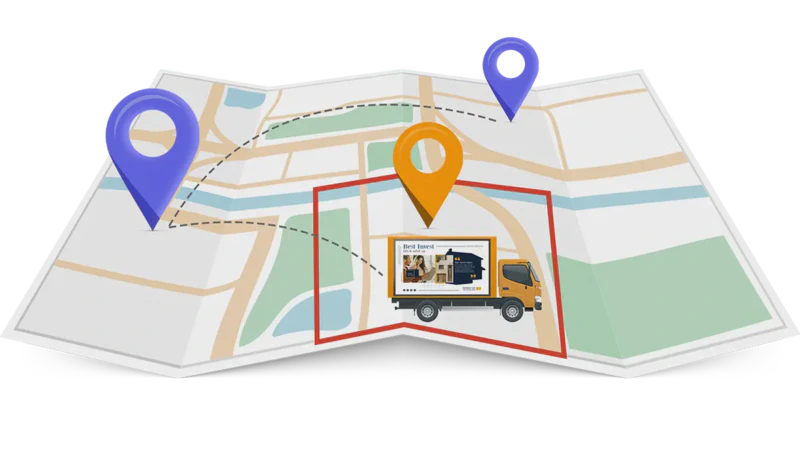
How to Use Geolocation in EasySignage
Not all digital signage platforms support geolocation, but EasySignage does!
EasySignage offers geolocation capabilities that make it super easy to deliver targeted content based on your screen’s location.
If you’re excited about the potential of geolocation (and who wouldn’t be?), here are 4 main steps to configure it in EasySignage:
- Set up and define zones:
The first step is to draw virtual boundaries on the map around specific locations to define geographic zones where you want your digital signage content to be displayed. This could be any zone, area or region you choose, and you can set up multiple geolocations and customise content for each one.
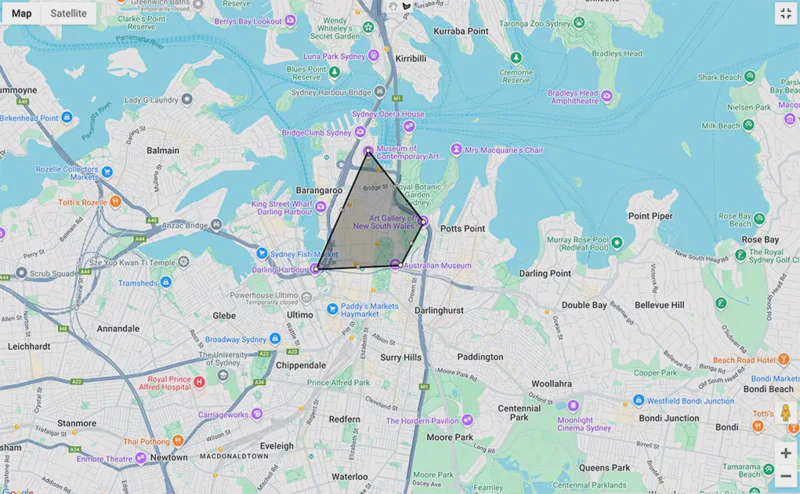
Create location-specific content:
Create relevant content and playlists for each zone. It could be special offers, local news, or event information. Set up your playlists and organise them in channels.Assign content to defined zones:
Now, link each playlist to its corresponding geographical zone so the content updates according to the defined location.Send the content to your screens:
Publish your geolocation-enabled playlists to the assigned screens. When a screen enters the geolocated area, the system automatically plays the appropriate digital signage content on the display and switches playlists designed for each location.
For more details on how to set up the geolocation feature in EasySignage, visit the following help page: Geolocation Help Page
Creative Use Cases of Geolocation
One of the coolest ways to use geolocation is in transportation, like on top of a moving taxi, on a bus, or even on the back of a delivery guy’s backpack, or any moving billboard. Businesses are finding clever ways to deliver content while people are on the move.
The bus for example can display content based on its location. As it moves through different areas of the city, the content changes to reflect what’s relevant to the people in that location. So, while the bus is near a shopping mall, you might see ads for clothing stores. When it moves closer to a residential area, the content could switch to promotions for local gyms or restaurants.
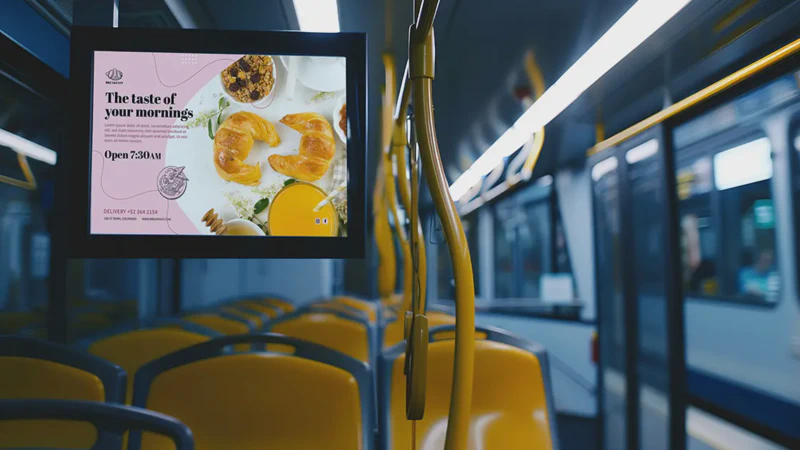
This concept can also be applied to taxis. With digital screens mounted on top, taxis can show location-based ads as they drive through different neighbourhoods.
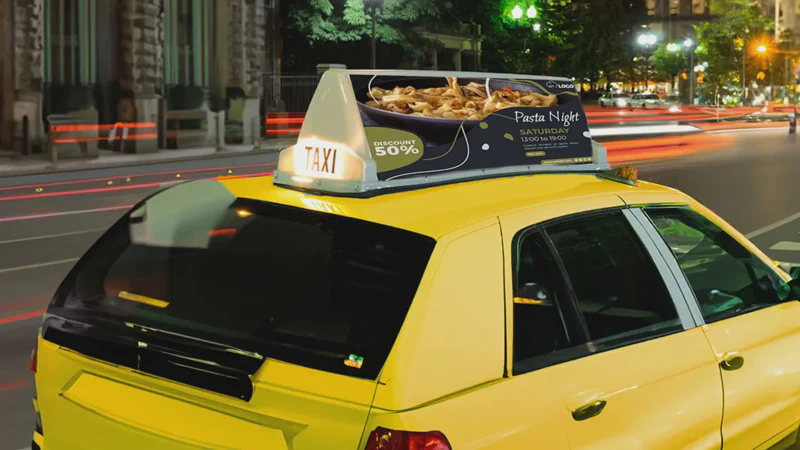
Another exciting application is in delivery services. It can be used with a delivery person riding a bike through the city, and on their backpack is a digital sign showing different ads depending on where they are. The sign might display lunch deals and then change to promotions for online shopping or home services as they move through the city.
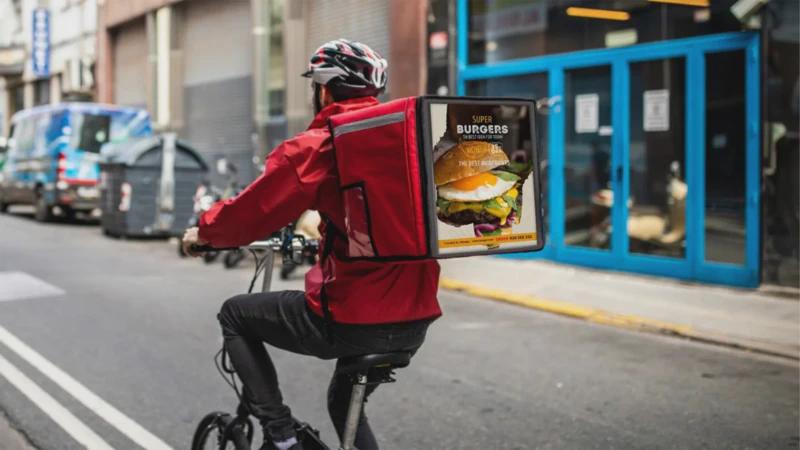
Final Thoughts
Don’t just display the same old content everywhere. Tailor it! Create content that’s specific to each location.
Geolocation makes your digital signage smarter, and more targeted and helps you focus your efforts where they matter most. Instead of casting a wide net and hoping for the best; you deliver precise information to a specific audience, making your marketing efforts more efficient and cost-effective.
Understand who you’re targeting in each location. Know your audience, what are their interests? What do they need at that moment? Pinpoint the areas where geolocation would be most effective for your business. The more you know, the better you’ll serve.
Got questions? We’ve got answers. Contact us today, and our team will assist you every step of the way.
The sky is the limit on how you can use geolocation in your business. Sign up now to try geolocation for free!